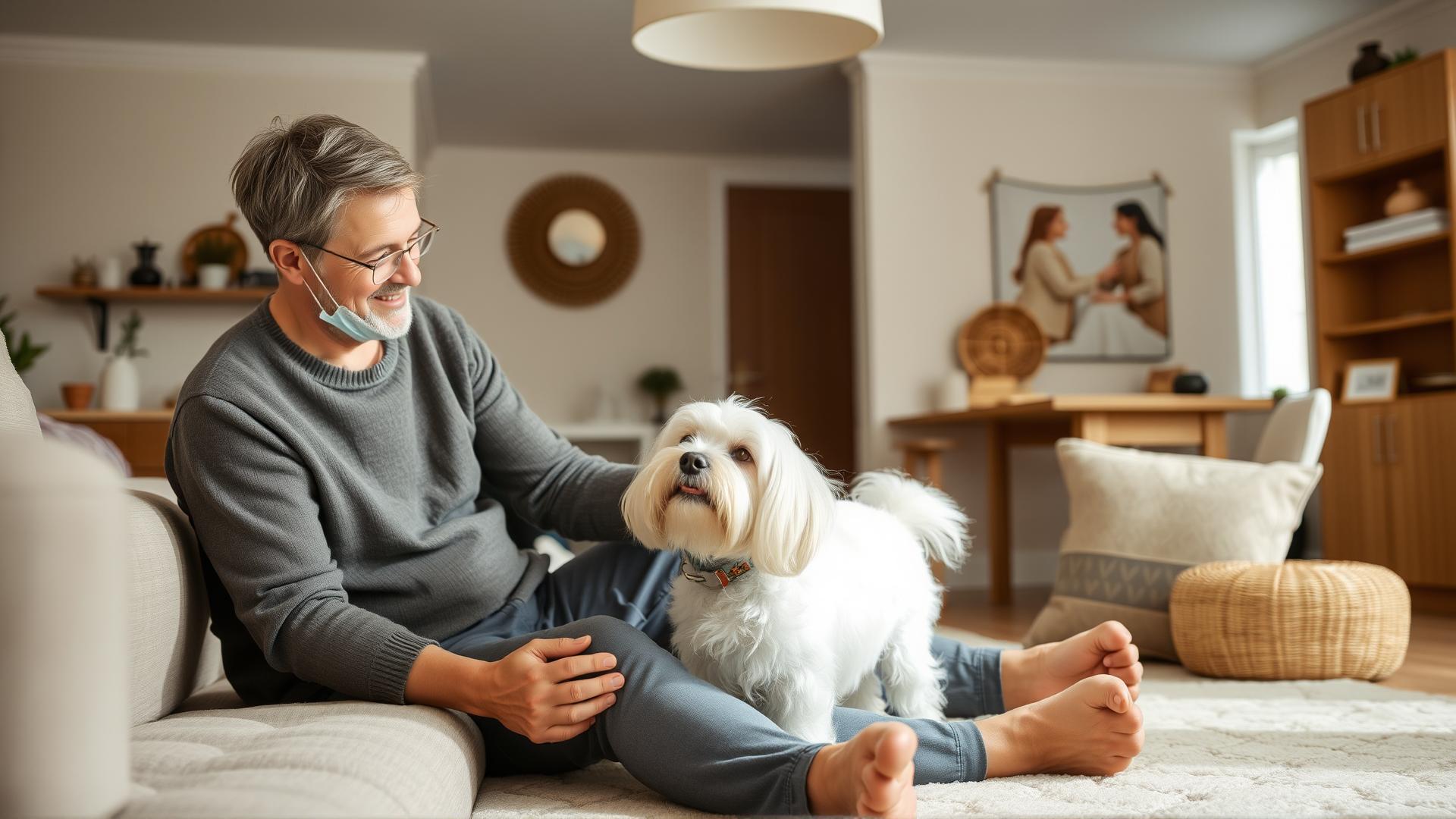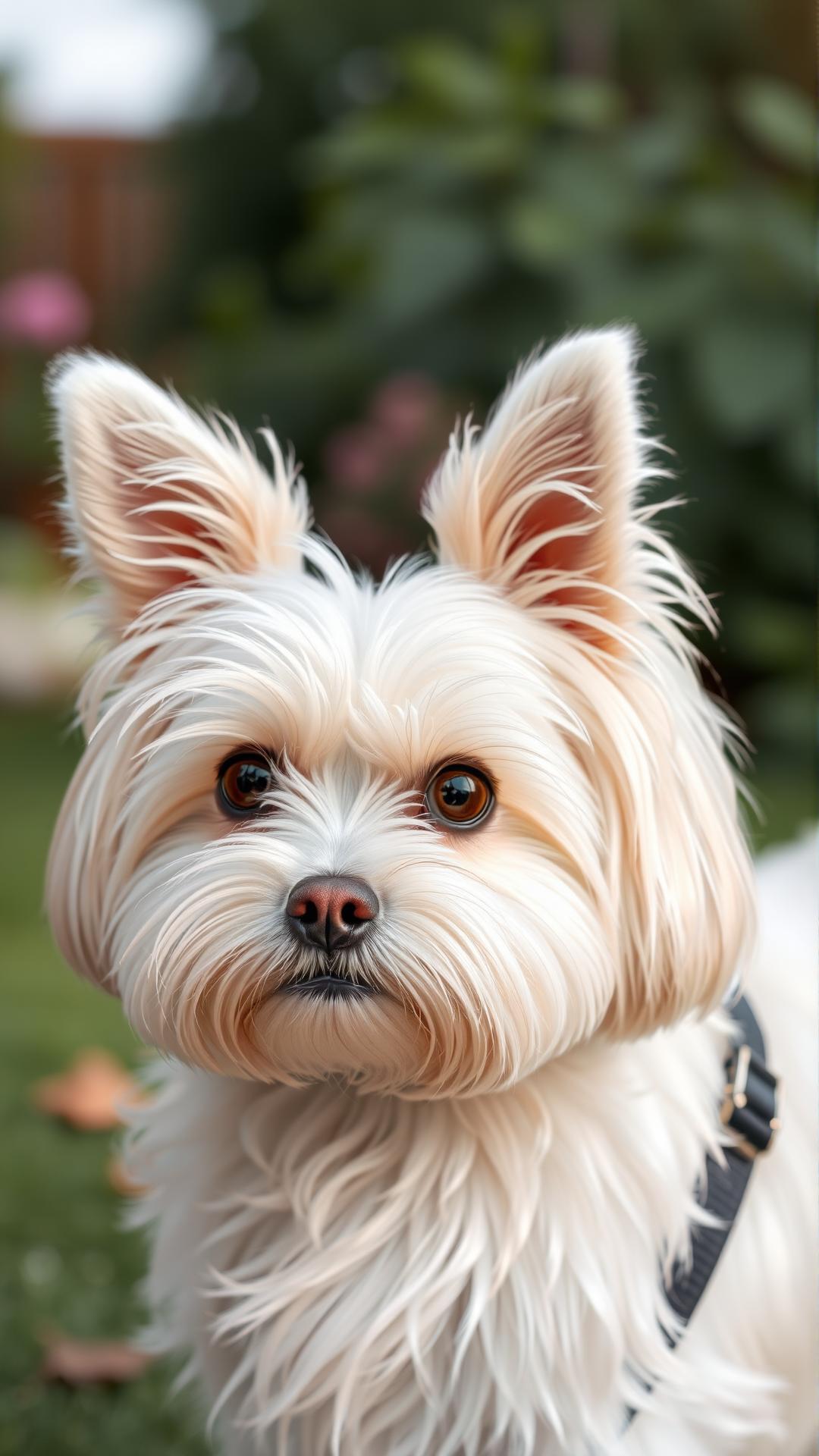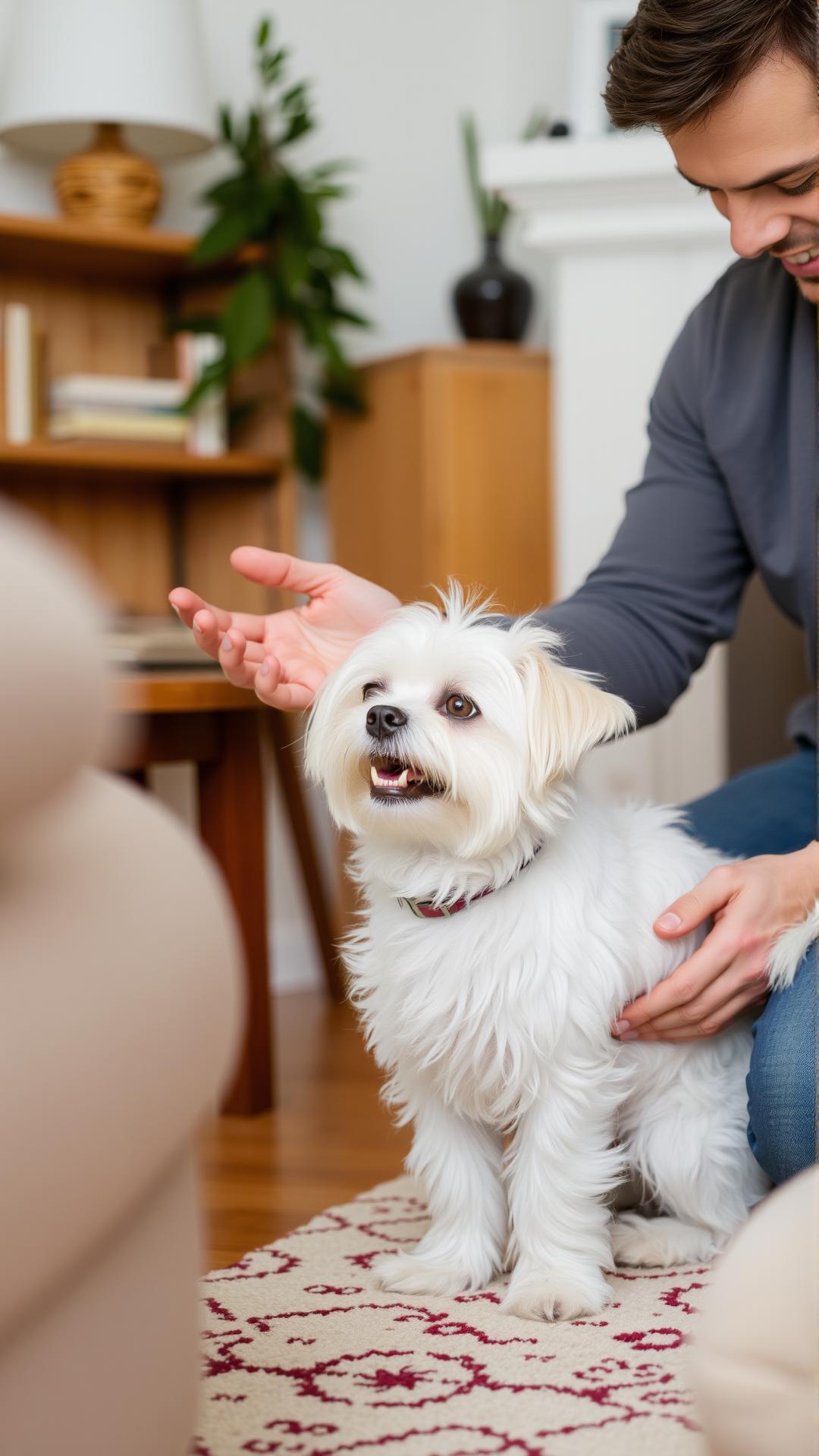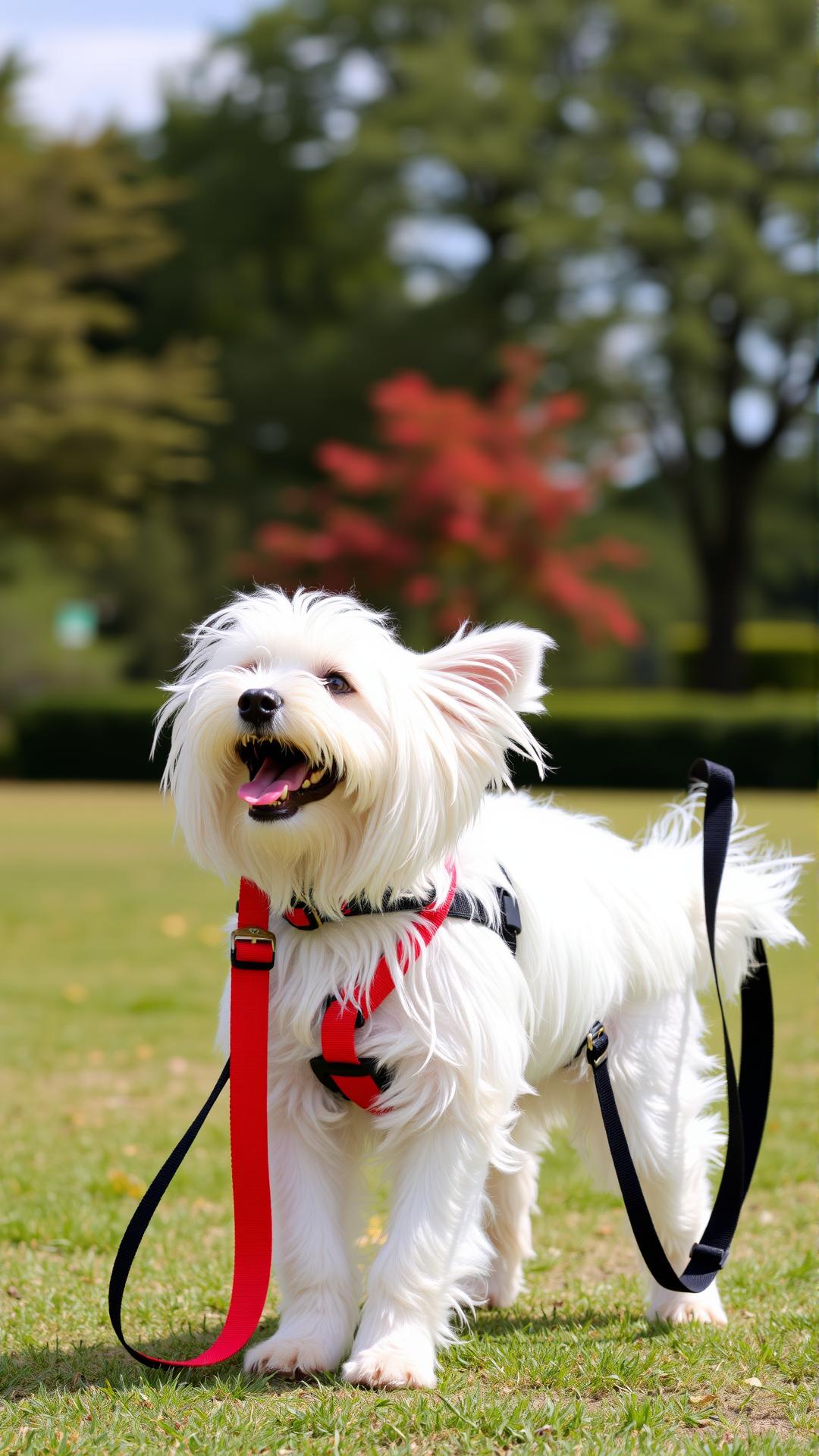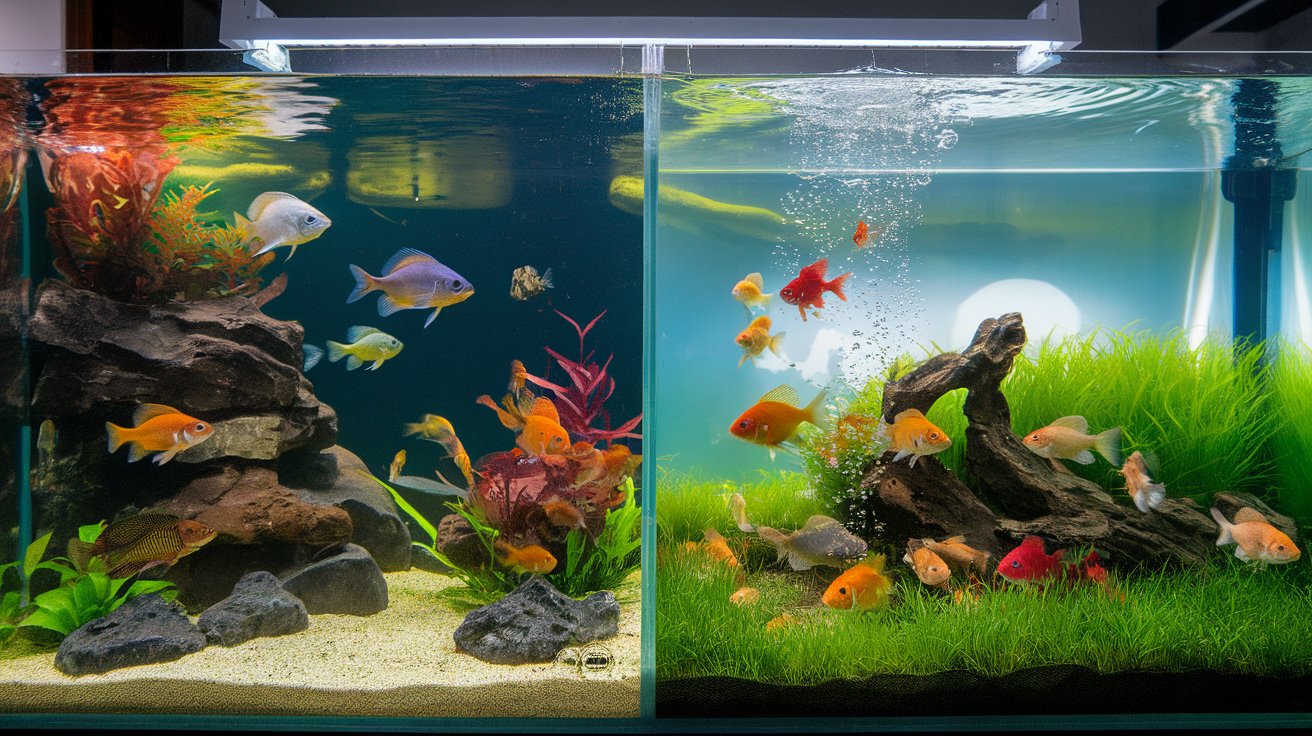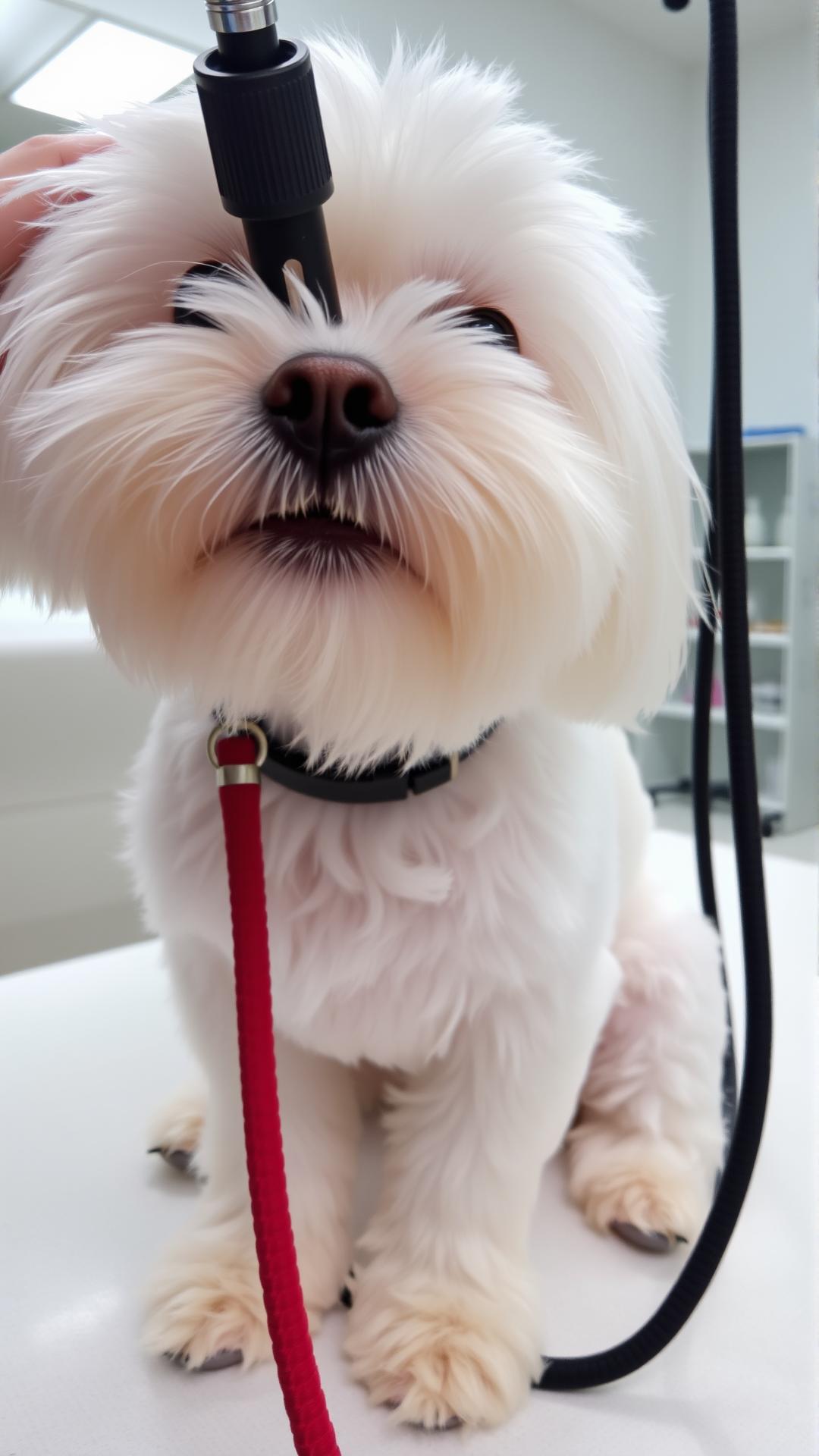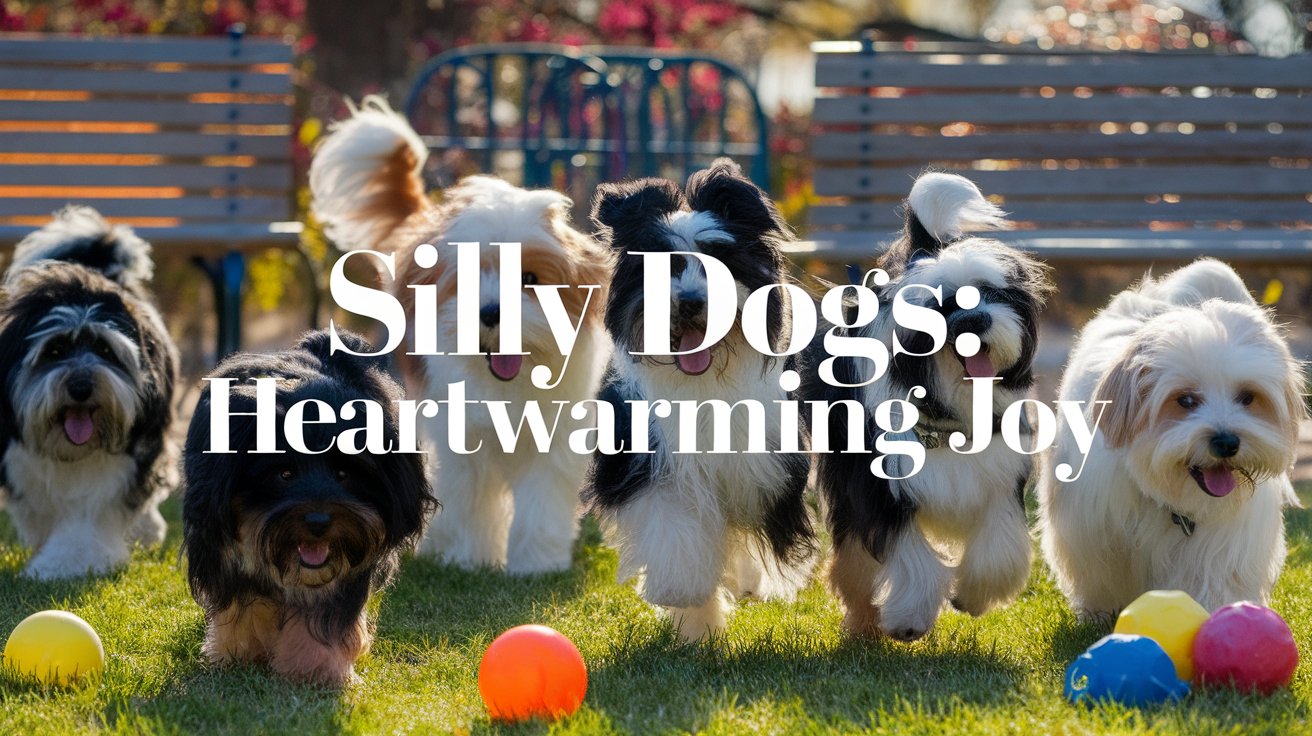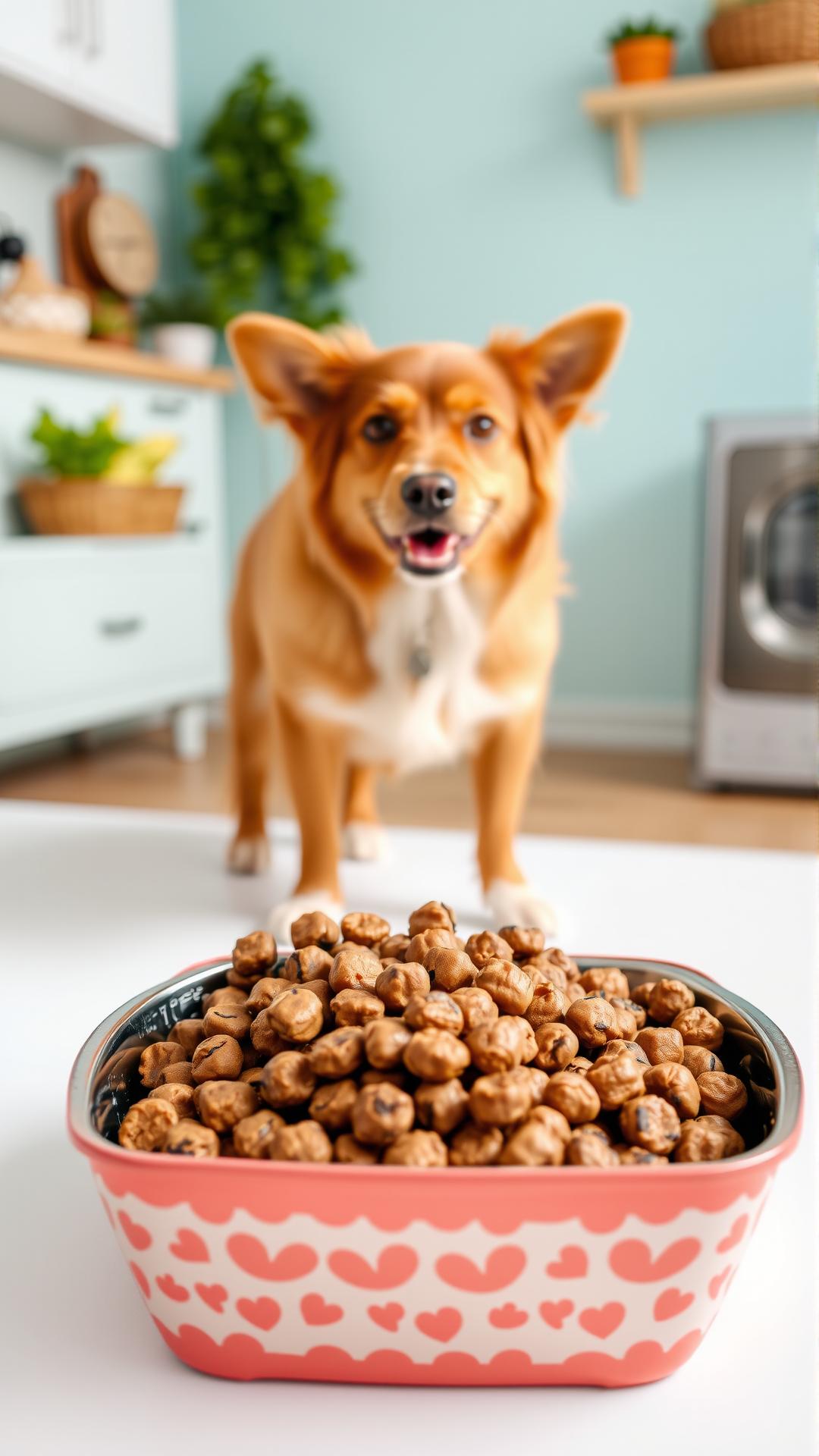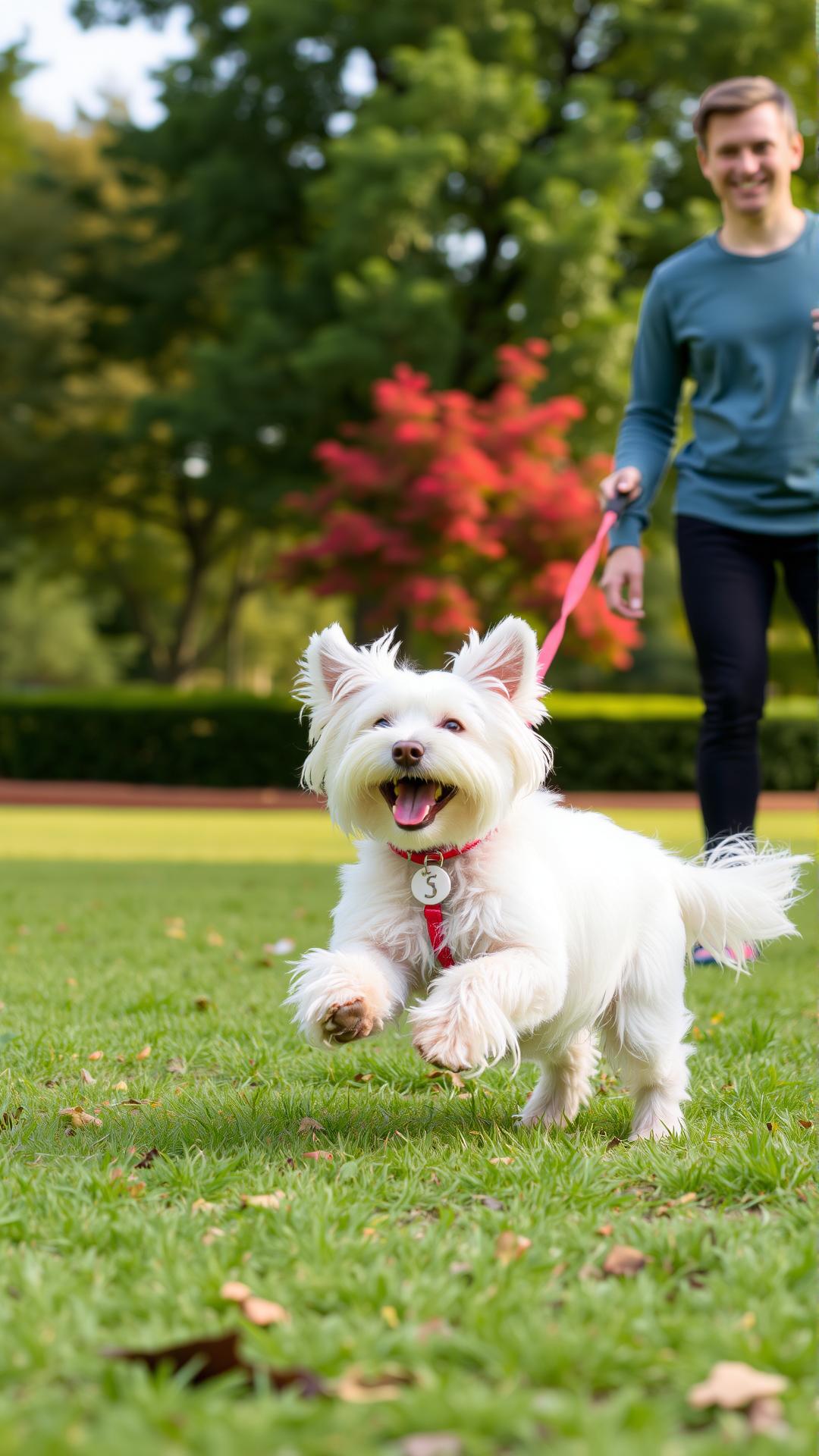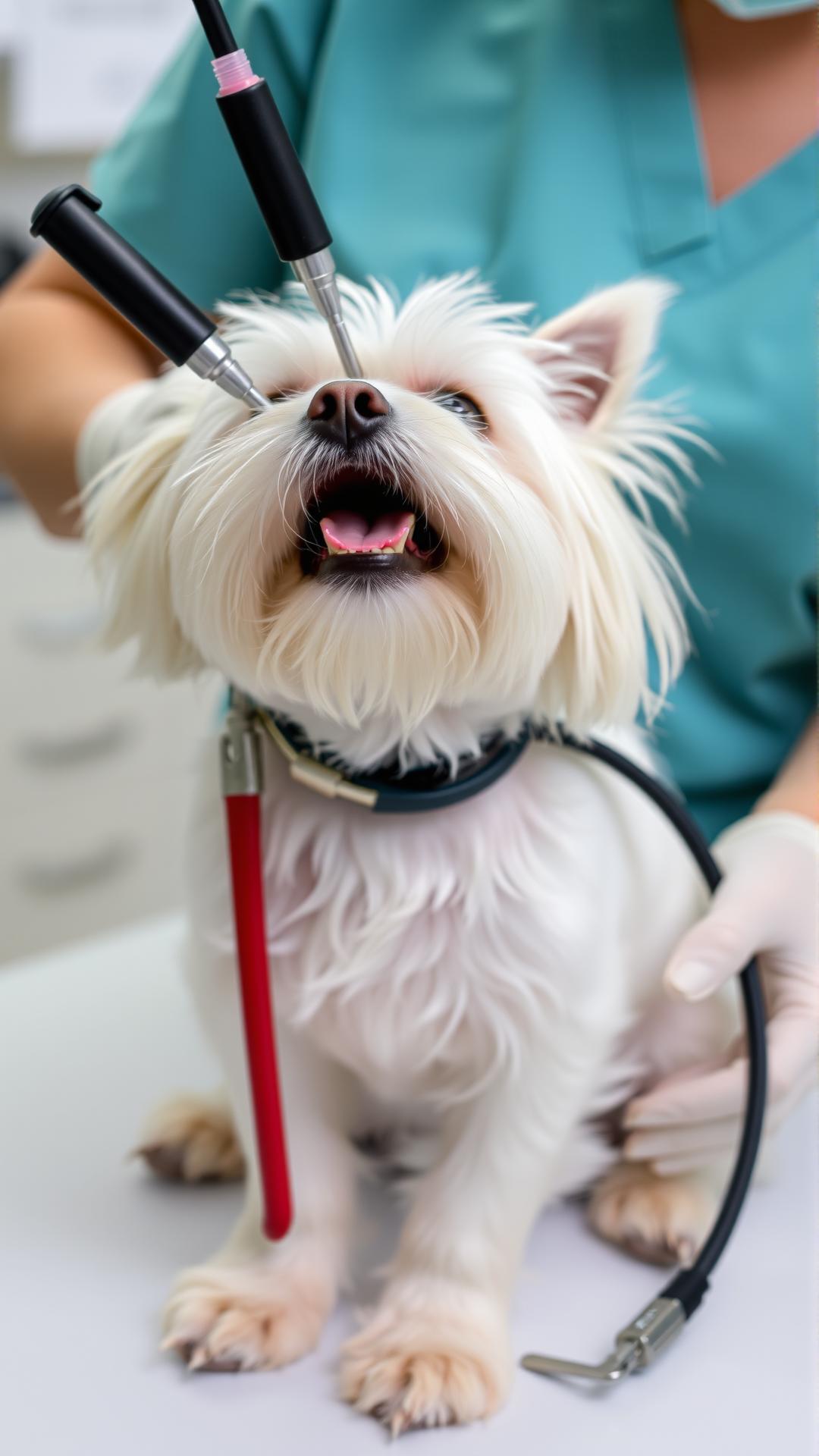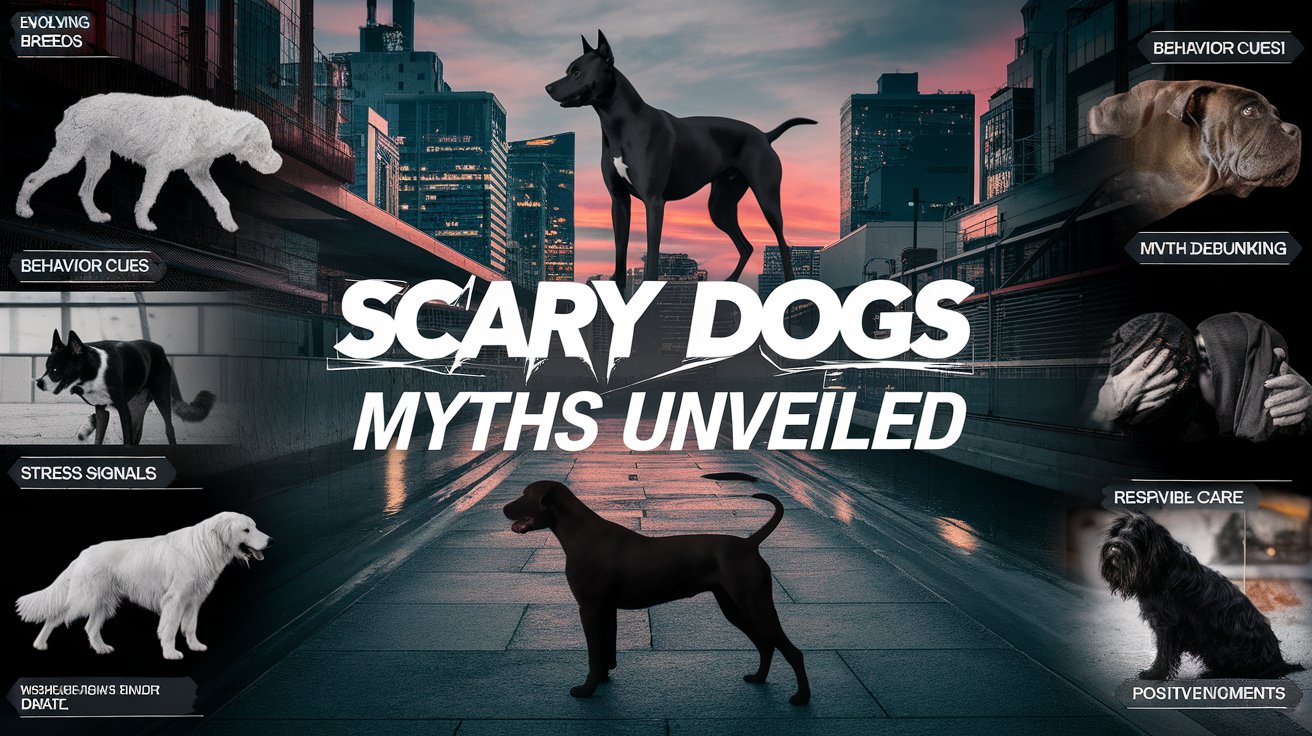Introduction
Maltese dogs are not only cherished for their stunning appearance but also for their endearing personality, making them delightful companions for dog lovers everywhere. These small, toy breed dogs are known for their silky, white coats and friendly disposition. As a popular choice for families and singles alike, understanding how to properly communicate with and care for Maltese dogs is essential for fostering a strong bond.
As we explore into the various aspects of Maltese care and communication, this article will guide you through essential tips and strategies that every owner should adopt. From training techniques to grooming advice, we will explore how to effectively cater to the unique needs of Maltese dogs to ensure they thrive in a loving home environment.
Understanding the Maltese Dog Breed Characteristics and Unique Qualities of Maltese Dogs
The Maltese dog is a breed that has captivated hearts for centuries. Historically, these small companions trace their roots back to the Mediterranean, particularly the island of Malta, where they were cherished by royalty and commoners alike. Known for their long, flowing white coats, Maltese dogs exude an air of elegance and charm, making them not just pets but treasured family members.
One of the most distinctive characteristics of Maltese dogs is their playful yet gentle demeanor. They typically weigh between four to seven pounds, making them ideal companions for individuals and families alike, especially in urban settings. Their small size does not limit their personality; they are known for their spirited nature and affectionate behavior. Maltese dogs thrive on social interaction and are drawn to their human companions, often forming strong bonds and displaying loyalty that is both endearing and unwavering.
The breed’s intelligence aids in both training and interaction. Maltese dogs are quick learners and enjoy obedience training, trick performance, or even agility exercises. Their eagerness to please makes them amenable to various forms of training, allowing them to adapt well to different lifestyles. This adaptability is another unique quality that makes Maltese dogs exceptional companions.
Maltese dogs exhibit traits that can be both charming and sometimes demanding. They tend to be alert, often barking to notify their owners of potential intruders or disturbances. This protective instinct, paired with their small size, can create a humorous contrast, as they may act as if they are much larger than they actually are. Their friendly disposition usually means they get along well with strangers, although early socialization is vital to nurture well-rounded behavior.
In terms of health and grooming, Maltese dogs require regular maintenance to keep their coats luxurious and free of tangles. Daily brushing and occasional professional grooming will help maintain their beautiful appearance and promote skin health. In addition, regular veterinary check-ups are essential to monitor any potential health issues specific to the breed.
Maltese dogs are not just adorable companions with a rich history, but they also possess unique qualities that endear them to their owners. Understanding their characteristics and behavior is key to nurturing a fulfilling relationship with these delightful pets.
Effective Communication with Your Maltese A Guide for Owners
Understanding Vocal Cues
Maltese dogs possess a wide-ranging vocal repertoire that allows them to express their needs, feelings, and desires. Owners should be attentive to these vocal cues to enhance their bond with their fluffy companions. For example, a high-pitched bark might indicate excitement or a desire for attention, while a low growl could be a warning or a sign of discomfort. Understanding these distinctions is vital; these small dogs may communicate a lot through their barks.
When your Maltese is whining, it often shows anxiety or a need for something, be it a potty break, food, or simply reassurance from their owner. It’s essential to respond appropriately—acknowledge their needs and provide comfort to strengthen your relationship. Over time, you will likely notice a pattern in how your Maltese communicates based on specific situations.
Reading Body Language
Body language is another crucial aspect of communication with your Maltese. Observing their physical cues can provide insight into their emotional state. For example, a Maltese with a relaxed body posture and wagging tail is generally happy and comfortable, while a dog that tucks its tail or cowers may be fearful or uncertain.
When your Maltese rolls onto its back, exposing its belly, this behavior often indicates trust and a desire for play or affection. On the contrary, if your Maltese stands rigidly with erect ears and a raised tail, this may signal alertness or potential stress. Understanding these signals will allow you to respond fittingly, whether it’s offering comfort or maintaining a positive play environment.
Interacting with your Maltese in a playful yet calm manner can help them feel secure and more willing to communicate. Low, soothing tones and a relaxed demeanor can assist in establishing trust, making it easier for your Maltese to express its emotions comfortably.
Successful communication with your Maltese relies on understanding both their vocal and physical expressions. By being aware of these cues and responding appropriately, you will enhance your relationship and create a supportive environment that nurtures your loyal companion’s happiness and well-being.
Essential Training Techniques for Maltese Dogs A Focus on Obedience and Socialization
Effective Obedience Training for Maltese Dogs
Maltese dogs are intelligent and eager to please, making them highly trainable companions. Successful obedience training relies primarily on establishing a strong bond between the owner and the dog. Positive reinforcement is a key technique to encourage desired behaviors. This means rewarding your Maltese with treats, praise, or playtime whenever it successfully follows a command. Simple commands like “sit,” “stay,” and “come” should be taught during short training sessions that last no longer than 10-15 minutes to maintain their focus.
Consistency is essential in any training regimen. Use the same verbal commands and hand signals for each command to help your Maltese associate the cues with the desired action. If your dog seems confused, it may be necessary to simplify the commands or slow the pace of training. When a behavior is consistently rewarded, it solidifies the learning process and creates a trustworthy and obedient companion.
Socialization Strategies for Your Maltese
Socialization is a critical aspect of training that should begin at an early age. Maltese dogs, especially, can develop anxiety or become overly protective if not properly socialized. Exposing them to various environments, people, and other animals helps them learn appropriate behaviors in different situations. Start with controlled interactions, allowing your Maltese to meet unfamiliar friends or pets in small increments to prevent overwhelming them.
Group training classes can be an excellent way to socialize your Maltese effectively. These classes not only aid in obedience training but also provide an opportunity to interact with other dogs. Make sure that the environment is safe and supportive, fostering positive experiences during these interactions.
Incorporating playtime into your socialization efforts is beneficial. Engage your Maltese in playdates with other friendly dogs or enroll in doggy daycare, where they can learn the dynamics of canine communication. Always supervise these interactions to ensure your dog feels safe and can retreat if it becomes uncomfortable.
Understand that training is an ongoing process. Regular reinforcement of learned behaviors and continued exposure to new social settings will help develop a well-adjusted and happy Maltese. By focusing on consistent obedience training and proactive socialization, you ensure your dog grows into a well-behaved companion, ready to embrace life’s adventures.
Grooming Your Maltese Best Practices
Understanding the Grooming Needs of Maltese Dogs
Maltese dogs have a distinct long, silky coat that requires regular grooming to maintain its beauty and health. Due to their fine hair, they are prone to matting and tangling, which can cause discomfort if not addressed promptly. A well-groomed Maltese not only looks good but also feels good, as regular grooming helps in monitoring their skin and overall health. Developing a consistent grooming routine is vital for every owner to ensure that their Maltese remains a happy and healthy companion.
Brushing Techniques for Silky Coats
Brushing your Maltese should be done at least two to three times a week, though daily brushing is ideal. This helps prevent tangles and mats from forming in their luxurious coat. Use a wide-toothed comb or a slicker brush specifically designed for long-haired breeds. Always start at the ends of the hair and work your way up to the roots to avoid pulling on their sensitive skin. Pay particular attention to the areas behind their ears, under their legs, and around their neck, which are prone to matting.
Bathing Your Maltese Effectively
Bathing is another essential aspect of Maltese grooming. It is recommended to bathe your Maltese every three to four weeks, or sooner if they get particularly dirty. Use a gentle, dog-specific shampoo that does not strip their coat of natural oils. After bathing, make sure to thoroughly rinse out all shampoo to avoid skin irritation. A conditioner designed for dogs can also be beneficial in keeping their coat manageable and soft. After washing, it’s imperative to dry the coat thoroughly with a soft towel or a dog dryer on a low setting, ensuring the coat does not become matted.
Clipping and Trim Maintenance
Regular trimming of your Maltese’s coat is crucial to maintain its shape and prevent excessive length. Consider a professional grooming session every 4-6 weeks to keep their coat neat. This includes clipping around the paws, underbody, and the area around the eyes to prevent hair from impairing their vision. If you prefer to maintain their coat at home, invest in high-quality clippers and familiarize yourself with proper techniques. Always take your time, and ensure your Maltese is comfortable during the grooming process to create a positive grooming experience.
Regular grooming not only enhances your Maltese’s appearance but also strengthens the bond between you and your furry friend. By incorporating these grooming practices into your routine, you ensure your Maltese remains vibrant, healthy, and ready to share their love with you.
Feeding and Nutrition for Maltese Dogs
Nutritional Needs of Maltese Dogs
Feeding your Maltese a healthy and balanced diet is vital for their overall well-being. Maltese dogs, known for their small size and playful nature, have specific nutritional requirements that differ from larger breeds. A high-quality dog food formulated for small breeds is essential, as it will contain the right size kibble and the necessary nutrients tailored to their needs.
Protein is a crucial component in a Maltese’s diet. Look for dog foods that list meat, poultry, or fish as the first ingredient. Maltese dogs generally require a diet rich in protein to maintain their energy levels and support their active lifestyles. In addition to protein, healthy fats are important as they contribute to a shiny coat and healthy skin, two characteristics that are particularly desirable in a Maltese.
Carbohydrates also play a role in providing energy. Whole grains, fruits, and vegetables are excellent sources of carbs that can enhance digestion and provide essential vitamins and minerals. However, it is wise to consult your veterinarian to identify which ingredients are beneficial and safe for your Maltese.
Portion Sizes and Feeding Guidelines
When it comes to portion sizes, it’s essential to factor in your Maltese’s age, weight, and activity level. Generally, adult Maltese dogs require around 1/2 to 1 cup of food daily, divided into two meals. Puppies, being more active and developing rapidly, may need up to 1 cup or more spread over three to four meals throughout the day.
While feeding, monitor your dog’s body condition and adjust portions accordingly. Overfeeding can lead to obesity, which poses significant health risks, while underfeeding can lead to malnutrition. Consistency is also key; make sure to feed your Maltese at the same times each day to promote a healthy routine.
Many Maltese owners also consider supplementing their dog’s diet with fruits and vegetables as treats. However, be cautious and select safe options like carrots, blueberries, or green beans while avoiding toxic foods such as grapes and onions.
Keeping a close eye on your Maltese’s weight and adjusting their diet as needed will aid in maintaining their health, ensuring they remain the lively, playful companions we cherish. With proper feeding and nutrition practices, your Maltese can thrive and enjoy a long, happy life alongside you.
Keeping Your Maltese Healthy and Active
Maltese dogs are small but energetic companions that require regular physical and mental stimulation to thrive. Maintaining their health and keeping them active involves more than just daily walks; it encompasses a variety of engaging activities tailored to their needs and personality.
Physical Activity for Maltese Dogs
Maltese dogs are known for their playful and spirited nature. While they do not require intense exercise like larger breeds, it is essential to incorporate several short bursts of activity throughout the day. Here are some effective ways to ensure your Maltese stays physically fit:
- Daily Walks: A minimum of 30 minutes of walking each day is beneficial. This helps to maintain their weight and stimulates their senses through new sights and smells.
- Interactive Play: Engage your Maltese in active playtime with toys such as balls or squeaky toys. These sessions not only help burn off energy but also strengthen your bond.
- Agility Training: Consider setting up a mini obstacle course in your backyard. Jumping over low obstacles or weaving through cones can be delightful and keeps them physically challenged.
Mental Stimulation
Maintaining your Maltese’s mental health is just as crucial as their physical well-being. Boredom can lead to destructive behaviors, so providing mental challenges is key. Consider the following options for mental engagement:
- Puzzle Toys: Invest in interactive puzzle toys that encourage your Maltese to solve problems for treats. This helps enhance their cognitive skills and keeps them occupied.
- Basic Commands: Regularly practicing commands such as sit, stay, and come not only provides mental stimulation but reinforces training and discipline.
- Socialization: Arrange playdates with other dogs or visit dog parks. Social interactions are fundamental for mental wellness and help build confidence.
Incorporate a mix of physical and mental activities into your Maltese’s routine for the healthiest lifestyle possible. By maintaining their physical fitness and engaging their mind, you will ensure that your little companion remains happy, active, and well-adjusted.
Recognizing Health Concerns in Maltese Dogs Common Health Issues
Understanding Potential Health Problems
Being a dedicated Maltese dog owner means being aware of the specific health concerns that may affect this charming breed. Maltese dogs, though known for their affectionate and playful disposition, are prone to certain health issues that require vigilance. Regular veterinary check-ups and an informed approach towards their health are paramount in ensuring your Maltese thrives.
One of the most prevalent concerns among Maltese dogs is dental disease. Due to their small mouths, overcrowded teeth can lead to tartar buildup and gum disease. Signs to recognize this issue include bad breath, difficulty eating, and swollen gums. Owners should prioritize dental hygiene by regularly brushing their dog’s teeth and scheduling professional cleanings as necessary.
Another common issue is patellar luxation, a condition where the kneecap dislocates from its normal position. This can lead to symptoms such as limping, reluctance to jump or climb stairs, and a “bunny hopping” gait. Regular observation of their movement can help catch this problem early. If you notice these signs, a visit to the vet can determine the best course of action, which may include weight management and surgical intervention in severe cases.
Skin allergies and irritations can also affect Maltese dogs. Their long, silky coats can hide skin infections or allergies which may present as excessive scratching, dry skin, or bald patches. Monitoring your dog’s coat and skin condition is essential. Regular grooming can help prevent matting and facilitate early detection of any issues.
Eye Care and Other Concerns
Maltese dogs are also susceptible to eye conditions such as tear stains, cataracts, and progressive retinal atrophy. Since their eyes are prominent, they require special attention. Look for signs of redness, excessive tearing, or squinting, which may indicate an eye issue. Regular cleaning with vet-approved solutions can help manage tear stains and maintain eye health.
Be mindful of weight management, as Maltese dogs are prone to obesity, which can complicate other health problems. Monitoring their diet and ensuring they receive adequate exercise will help maintain their health. Keeping these various potential health issues in mind will not only aid in recognizing early signs of trouble but also enhance the quality and longevity of your Maltese companion’s life.
Conclusions
Maltese dogs offer a unique blend of cuteness and companionship that can enhance any household. By applying the communication and care tips outlined in this article, Maltese owners can ensure their pets enjoy a healthy, happy, and fulfilling life. Emphasizing a balanced approach to their well-being – including proper training, nutrition, and love – will help you bond deeply with your Maltese.
Incorporating regular socialization and grooming routines will promote not only a joyful relationship but also safeguard the physical and emotional health of your beloved Maltese. Ultimately, understanding their specific needs is key to being an attentive and responsible owner.

